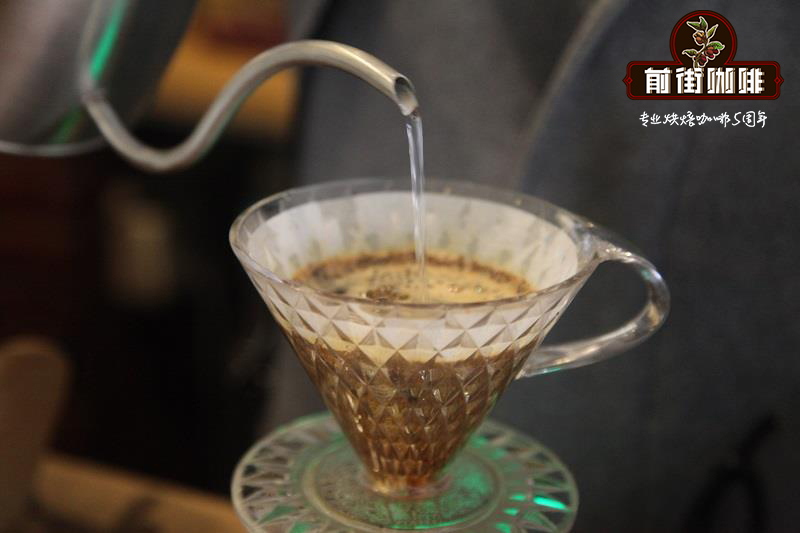Raminita Tarrazu Manor in Tarasu, Costa Rica
Raminita Tarrazu Manor in Tarasu, Costa Rica

Planting height: 1200-1700 (m)
Production season: November to March
Cup test results: full-bodied beans, rich aroma, coffee characteristics
Coffee characteristics: this area is a world-famous producing area, the main feature is that the high seafood area creates an incomparable perfect taste.
Raminita La Minita
La Minita is an international coffee export company named after Hacienda La Minita Raminita Manor, the flagship estate in Tarazu, Costa Rica. In addition to Costa Rica's flagship estate, Raminita also offers raw coffee beans from all over the world. Raminita vertically integrates their farms and processing plants around the country to give the coffee a consistent and stable quality and flavor. And focus on staff in the world's top producing areas and places of origin to ensure that the coffee reaches the high quality of Raminita export.
The geographical environment of Raminita Manor
Hacienda La Minita Manor is located in the famous Tarrazu producing area of Costa rica. Because of its excellent geographical environment and microclimate, the beans of La Minita Manor have a more balanced and fragrant taste than coffee from other Tarrazu producing areas.
Of the 1200 acres of the total cultivated area of La Minita, 680 acres are currently under cultivation. Of the remaining 520 acres, 200 acres are located in the south as a natural forest protection area forbidden to grow coffee trees, while the manor is planted in the east-west direction, facing the Tarrazu River to the south and the Alumbre River to the north. The two rivers meet on the western ridge where the manor is located, and the soil is gray, yellowish brown and reddish clay rich in organic matter. Some areas of the manor reach a height of 1830 meters, but the height of the central region falls between 1250 and 1650 meters.
Although there are differences in altitude and temperature, fortunately, the river around the manor reduces the cooling effect, and the farm faces to the west and can slowly heat up in the morning and cool slowly in the evening. It is also because this unique geographical environment has formed a unique advantage.
Coffee Tree species and planting in Raminita Manor
Four varieties of coffee trees, Caturra, Caturra red, Caturra yellow and Hibridoru, were planted on La Minita Manor in about 680 acres. After years of experimental statistical analysis and cup quality testing, La Minita Manor decided to mainly adopt Caturra varieties and continue to retain a small number of old Hibrido varieties. Although La Minita planted about 2500 coffee trees per acre, the number of coffee trees was still determined according to geographical characteristics and coffee species. La minita Manor currently has a total of about 1.7 million trees. La Minita adopts a five-year knockout system. Every five years, the previously produced coffee trees are cut down to a height of about 50 centimeters, leaving lower branches. This practice will stimulate the rebirth of the trees. After a year of cutting down trees, two main twigs will be selected for production in the next four years. These processes are all carried out manually, with about 350000 trees trimmed each year. After three rounds of pruning, that is, 15 years, the resources of the coffee trees are almost exhausted. La Minita will move new trees from his own coffee nursery instead. The nursery is located in a well-protected place in the manor. The new trees planted in the nursery will be planted in the nursery for one year before being transplanted to the production farm. Under normal circumstances, La Minita transplants about 150000 coffee trees a year. In addition, La Minita uses fast-growing and wide-leaved "Pror" trees as coffee shade trees, which will choose different planting densities according to the demand for sunlight and temperature control in the production area, and will be adjusted according to the demand.
The soil in all manors is tested twice a year, and according to the above-mentioned test results, a decision is made on how to fertilize the soil. La Minita Manor is very careful in using products that can increase yield, applying fertilizer about three times a year, out of economic and environmental considerations and reasons. In addition, spraying trace elements such as zinc, boron and copper on the back of the leaves can provide more nutrients and prevent diseases.
In La Minita Manor, pesticides are not used, and fortunately, the climate and altitude formed by the geographical advantages of the estate greatly limit the number of pests. Most importantly, through our careful planting and weeding techniques, the coffee trees grown by La Minita are strong and healthy, and a few pests do not have much impact on the coffee trees. At the end of the rainy season, cherry fruit ripens immediately, green cherry fruit begins to change to red or yellow, cherry fruit ripens very slowly and unevenly, not as fast and consistent as flowering. Therefore, the harvest must be handled more carefully. The ripe cherry fruit will be harvested first, and the immature fruit will be left on the tree for harvest later. The fruit of a coffee tree will be harvested up to five times by La minita due to maturity, and the production season will end after the last harvest, around the end of February. After the production season, all coffee fruits, whether ripe or immature, are picked to prepare the caffeine tree for production in the coming year.
Important Notice :
前街咖啡 FrontStreet Coffee has moved to new addredd:
FrontStreet Coffee Address: 315,Donghua East Road,GuangZhou
Tel:020 38364473
- Prev

Central Valley producing area in the Central Valley of Costa Rica
Planting height of Central Valley production area in the Central Valley of Costa Rica: 1200-1600 (m) production season: November to March Cup test results: full-bodied beans, rich aroma, coffee characteristics of coffee: coffee in this area is the earliest coffee growing area in Costa Rica, rich in volcanic soil, sometimes with chocolate aroma. Exquisite sun and honey that are now quite popular in Costa Rica
- Next

Coral Mountains in the Tres Rios producing area of Sanhe, Costa Rica
Costa Rican Coffee is famous for its exquisite taste and strict quality control in the Coral Mountain, the Tres Rios producing area of Sanhe, Costa Rica. In the private room coffee has been introduced to Costa Rica's Fica (Wolf Manor), which is a 50% honey-treated bean with a rich sweet taste and even a milky aroma when roasted in medium and deep depth. This time, we will bring you another one from Costa Rica.
Related
- Detailed explanation of Jadeite planting Land in Panamanian Jadeite Manor introduction to the grading system of Jadeite competitive bidding, Red bid, Green bid and Rose Summer
- Story of Coffee planting in Brenka region of Costa Rica Stonehenge Manor anaerobic heavy honey treatment of flavor mouth
- What's on the barrel of Blue Mountain Coffee beans?
- Can American coffee also pull flowers? How to use hot American style to pull out a good-looking pattern?
- Can you make a cold extract with coffee beans? What is the right proportion for cold-extracted coffee formula?
- Indonesian PWN Gold Mandrine Coffee Origin Features Flavor How to Chong? Mandolin coffee is American.
- A brief introduction to the flavor characteristics of Brazilian yellow bourbon coffee beans
- What is the effect of different water quality on the flavor of cold-extracted coffee? What kind of water is best for brewing coffee?
- Why do you think of Rose Summer whenever you mention Panamanian coffee?
- Introduction to the characteristics of authentic blue mountain coffee bean producing areas? What is the CIB Coffee Authority in Jamaica?

